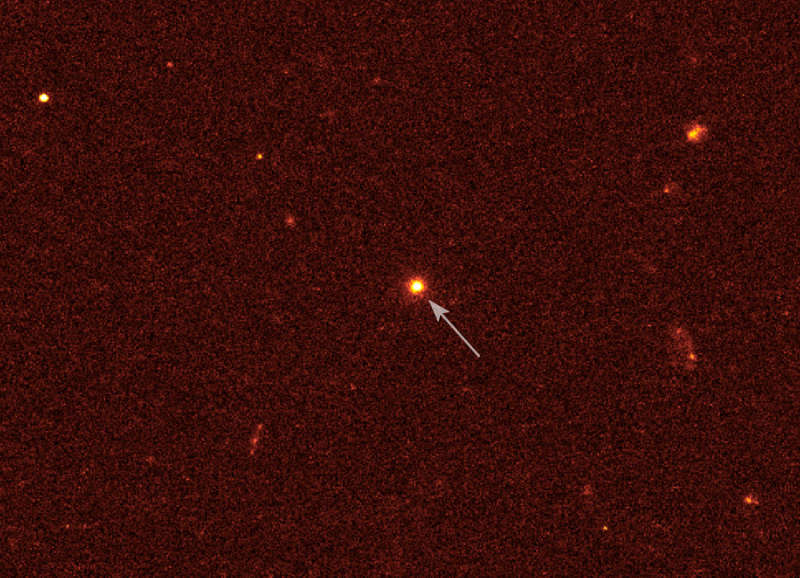Explanation: A symphony of planet-wide observations began abruptly on March 28 when the Earth-orbiting Swift satellite detected a burst of high-frequency gamma-rays from GRB 110328A. When the same source flared again after a 45 minute pause it was clear this event was not a typical gamma-ray burst. Twelve hours after the initial fanfare astronomers using the 2.5-meter Nordic Optical Telescope chimed in with a mid-range observation of the optical counterpart. Early the next day the explosion was picked up in baritone low-frequencies of radio waves by the ELVA radio dishes in the USA. Later many optical telescopes, including the 8-meter Gemini North telescope in Hawaii, began playing along by tracking the optical counterpart. The unusual source was spotted at a higher register in X-rays by the Chandra X-ray Observatory and was intermittently followed in the even more soprano-like gamma-ray range for a week. Joining the chorus, Hubble Space Telescope recorded this image in optical and infrared light, confirming that the flash was located along the path of a galaxy at redshift 0.351. If associated with the galaxy, this explosion occurred when the universe was about two thirds of its present age. There is much speculation that the unusual gamma-ray burst was a star being ripped apart by a supermassive black hole in the center of a galaxy and the puzzling features of the distant detonation are still being explored.
1999 2000 2001 2002 2003 2004 2005 2006 2007 2008 2009 2010 2011 2012 2013 2014 2015 2016 2017 2018 2019 2020 2021 2022 2023 2024 2025 |
Yanvar' Fevral' Mart Aprel' Mai Iyun' Iyul' Avgust Sentyabr' Oktyabr' Noyabr' Dekabr' |
NASA Web Site Statements, Warnings, and Disclaimers
NASA Official: Jay Norris. Specific rights apply.
A service of: LHEA at NASA / GSFC
& Michigan Tech. U.
|
Publikacii s klyuchevymi slovami:
gamma-ray burst - Swift - multiwavelength - gamma-vspleski - mnogovolnovyi
Publikacii so slovami: gamma-ray burst - Swift - multiwavelength - gamma-vspleski - mnogovolnovyi | |
Sm. takzhe:
Vse publikacii na tu zhe temu >> | |
